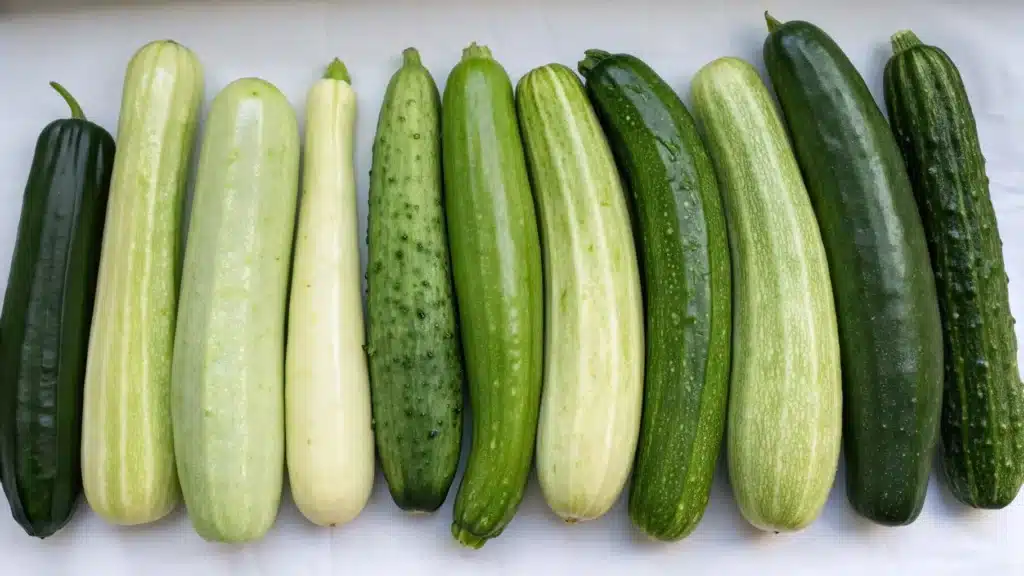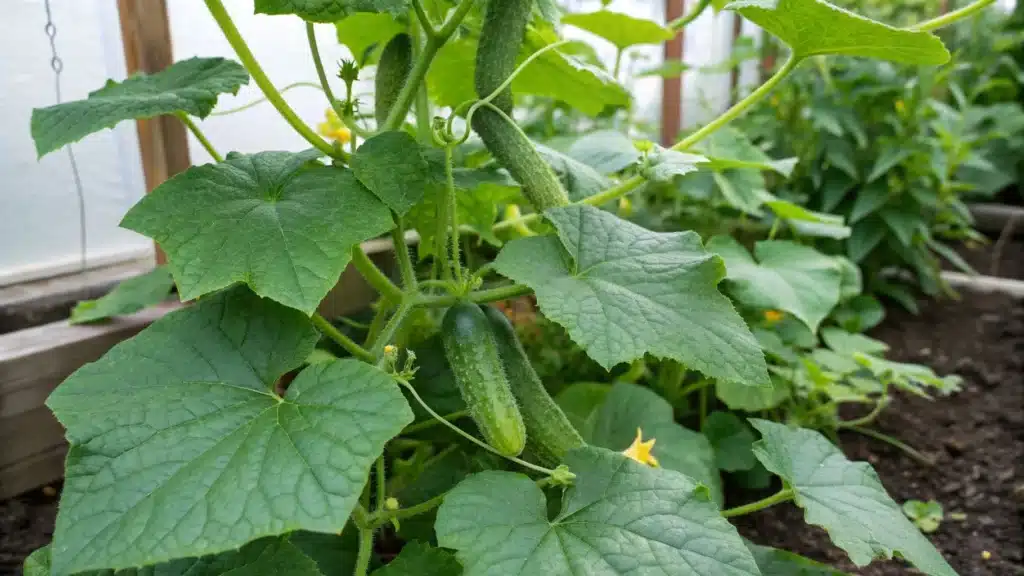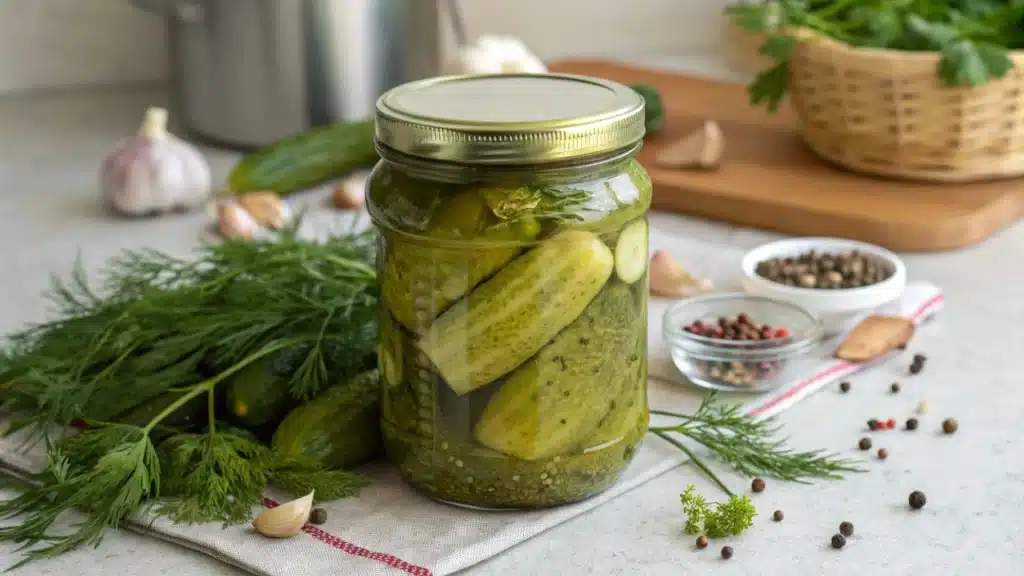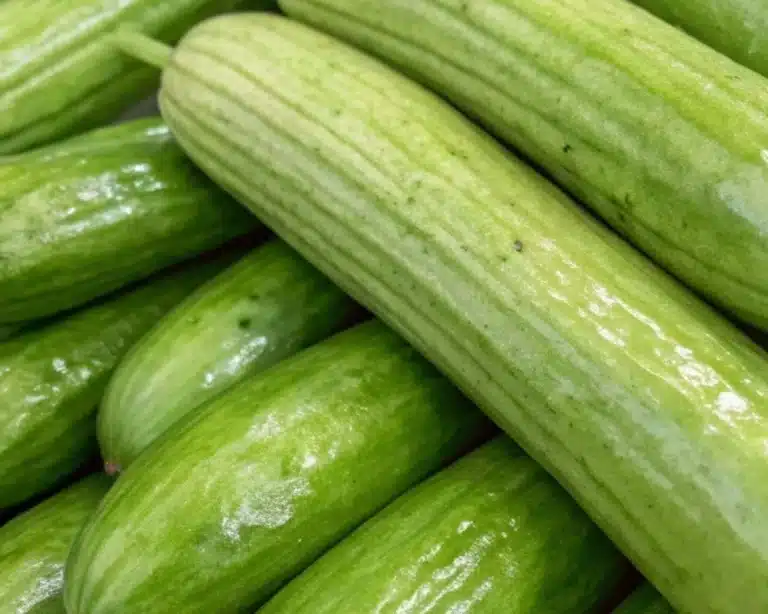Curious about growing Armenian cucumbers? These crisp, refreshing veggies are a joy to cultivate and a treat for your kitchen. Perfect for gardeners of all levels, they’re forgiving, easy to grow, and stay flavorful even if left on the vine a bit longer. Ready to transform your garden with this unique vegetable? Let’s explore how to grow and enjoy them!
Table of Contents
Understanding Armenian Cucumbers
Botanical Background and Varieties

Armenian cucumbers, often mistaken for a true cucumber, are actually a type of muskmelon, specifically the Cucumis melo var. flexuosus. Despite their name, they belong to the melon family and not the common cucumber family. Originating from the Middle East, these cucumbers are known for their long, slender shape and ribbed skin. There are two main varieties: the light green and the striped version.
Unique Characteristics and Benefits
One of the standout features of the Armenian cucumber is its ability to grow without turning bitter, unlike many common cucumbers. This makes them ideal for gardeners who might miss the perfect harvest window. They are also heat-tolerant and disease-resistant, making them a favorite in hot climates. Their sweet cucumber-like taste remains consistent, even as they grow larger, which is a major advantage over other varieties of cucumber.
Common Misconceptions
A frequent misconception is that Armenian cucumbers are a type of wild cucumber. In reality, they are not related to the wild cucumber species. Another misunderstanding is their classification; many assume they are a true cucumber due to their taste and appearance. However, as mentioned earlier, they are muskmelons. This confusion often leads to them being incorrectly labeled in markets and gardening centers.
Planting Armenian Cucumbers
Choosing the Right Location
Finding the perfect spot for your Armenian cucumber plant is key. These plants love the sun, so aim for a spot where they’ll get at least 6-8 hours of direct sunlight each day. A sunny garden bed with plenty of room is ideal. If you’re short on space, consider growing them vertically using a trellis or a sturdy support structure. This not only saves space but also helps the cucumbers grow straight and true.
Preparing the Soil
Before you plant, make sure your soil is ready. Armenian cucumbers aren’t too fussy, but they thrive in well-draining soil. Mix in some compost or organic matter to boost nutrients. A pH between 6.0 and 7.0 is best, so test your soil if you can. If you’re planting in a yard long cucumber patch, ensure the soil is loose and free of rocks or debris that could hinder root growth.
Understand soil preparation techniques that work well for small palm trees and other exotic plants
Seed Starting and Transplanting
You can start Armenian cucumbers from seed either directly in the garden bed or indoors if you want a head start. If starting indoors, plant seeds in biodegradable pots about 3-4 weeks before the last frost date. This way, you can transplant the whole pot into the garden without disturbing the roots. When sowing directly, wait until the soil is warm—around 70°F is perfect. Plant seeds about 1 inch deep and space them 12 inches apart. Once seedlings have a couple of true leaves, thin them out to ensure the strongest plants thrive.
Remember, patience and consistency are your best tools in gardening. With the right care, your Armenian cucumber plants will reward you with a bountiful harvest.
Caring
Watering and Fertilization
Keeping your Armenian cucumber plants happy and productive involves some straightforward care. Consistent watering is key. Aim to keep the soil evenly moist, but not soggy. A drip irrigation system can work wonders in maintaining this balance, providing about 1 to 2 inches of water per week. Watering in the morning helps reduce the risk of disease by ensuring the leaves dry by evening.
When it comes to feeding your plants, a balanced fertilizer applied monthly will support healthy growth and fruit production. Opt for a slow-release granular type to keep it simple. These cucumbers aren’t too picky, so you won’t need anything fancy.
Pollination Techniques
Armenian cucumbers have both male and female flowers, which means they can self-pollinate, but a little help can boost your yield. If natural pollinators are scarce, you can manually pollinate using a small paintbrush. Identify the male flowers (which lack the small fruit at the base) and gently brush some pollen onto the female flowers (which have the tiny fruit). This simple step can make a noticeable difference in your harvest.
Managing Pests and Diseases

While Armenian cucumbers are generally hardy, keeping an eye out for pests and diseases is wise. Common pests like aphids and cucumber beetles can be managed with regular monitoring and the use of insecticidal soap or neem oil as needed. To prevent diseases, ensure good air circulation by spacing plants properly and removing any dead or diseased foliage promptly.
Taking these steps will help ensure your Armenian cucumber plants stay healthy and productive throughout the growing season. With a bit of attention, you’ll be rewarded with a bountiful harvest.
Harvesting
Optimal Harvest Time
Armenian cucumbers, a popular vegetable, are best picked when they reach about 12-15 inches in length. This is when they are tender and packed with flavor. While they can grow larger, harvesting them at this size ensures a crisp texture and mild taste. If left on the vine too long, these elongated vegetables can become seedy, although they don’t turn bitter like some other cucumber varieties.
Proper Harvesting Techniques
To harvest, use a sharp knife or garden shears to cut the ribbed fruit from the vine. Be careful not to damage the plant, as this can affect future yields. Regular harvesting encourages the plant to produce more fruit, so check your garden frequently.
- Inspect the cucumbers daily once they start to grow.
- Use clean, sharp tools for cutting to prevent disease.
- Handle the fruits gently to avoid bruising.
Post-Harvest Handling
Once harvested, store Armenian cucumbers in a cool, dry place. They can last for a week or more when stored properly. If you have a large harvest, consider pickling or sharing with friends and family.
Remember, frequent harvesting not only keeps your plants productive but also ensures you enjoy the freshest, most flavorful cucumbers.
Enjoying Armenian Cucumbers in the Kitchen
Fresh Culinary Uses
Armenian cucumbers are a delightful addition to any meal, offering a crisp texture and mild flavor. Perfect for fresh eating, these cucumbers can be sliced into salads, adding a refreshing crunch. Try them in a tzatziki sauce or as a topping for gyros. For a simple snack, sprinkle with salt and a squeeze of lemon.
Preservation Methods

To enjoy Armenian cucumbers beyond the growing season, consider preservation. Pickling is a popular method, transforming them into a tasty cucumber treat. Alternatively, you can slice and freeze them for smoothies or soups. Dehydrating is another option, creating cucumber chips for a healthy snack.
Pairing with Other Ingredients
Armenian cucumbers are the perfect accompaniment to many dishes. Pair them with tomatoes and feta for a Mediterranean salad, or combine with avocado and lime for a refreshing salsa. They also work well in sandwiches, adding a crisp layer without overpowering other flavors.
Armenian cucumbers offer versatility in the kitchen, making them a staple for fresh and preserved dishes alike. Their unique texture and flavor profile enhance both simple and complex recipes, inviting creativity in every bite.
Pair your Armenian cucumbers with fresh oregano for a burst of Mediterranean flavor in your dishes.
Troubleshooting Common Growing Issues
Identifying Growth Problems
Growing Armenian cucumbers can sometimes be tricky, but knowing what to look for can make all the difference. Wilting leaves, yellowing foliage, and stunted growth are common signs of trouble. Check for abundant soil moisture; too much or too little can stress the plants. Inadequate sunlight or poor soil quality might also be culprits. If plants are in containers, ensure they have enough room and proper drainage.
Solutions for Poor Yield
If your Armenian cucumbers aren’t producing as expected, consider these solutions:
- Ensure Pollination: Lack of pollinators can be a problem. Hand-pollinate or plant flowers nearby to attract bees.
- Optimize Nutrients: Use a balanced fertilizer to boost growth and fruit production. Organic options like compost can also help.
- Check Plant Spacing: Overcrowding can limit growth. Ensure each plant has adequate space to thrive.
Preventing Bitter Taste
Bitter cucumbers are a common issue and can be quite off-putting. Here’s how to avoid it:
- Consistent Watering: Keep the soil consistently moist but not waterlogged. Fluctuations can lead to bitterness.
- Avoid Stress: Stress from heat or drought can cause bitterness. Mulching helps retain soil moisture and regulate temperature.
- Harvest Regularly: Pick cucumbers when they are still dark green and tender to avoid bitterness.
Growing Armenian cucumbers is rewarding, but it requires attention to detail. By understanding common issues and their solutions, you can ensure a successful harvest season after season.
Conclusion
Growing Armenian cucumbers is a rewarding journey for any gardener. With their crisp texture, sweet flavor, and resistance to heat, they thrive in warm climates and never turn bitter. Whether enjoyed fresh in salads or pickled for later, this versatile vegetable is a delightful addition to your garden. Grab your seeds, find a sunny spot, and start your cucumber adventure. Happy gardening!
Frequently Asked Questions
What are Armenian cucumbers?
Also known as snake cucumbers or cucumber-melons, they are a type of muskmelon. They look like regular cucumbers but are actually a variety of melon.
How do I plant Armenian cucumbers?
Start by choosing a sunny spot with warm soil. You can plant seeds directly in the ground once the weather is consistently warm. If starting indoors, use a heat mat to help them grow.
Do Armenian cucumbers need a lot of water?
Yes, they need to be kept evenly moist. It’s important not to let the soil dry out for long periods, but also avoid making it too soggy.
When is the best time to harvest Armenian cucumbers?
Harvest them when they are about 12-15 inches long. If they grow larger, they can still be eaten, but the seeds might be tougher.
Do Armenian cucumbers taste different from regular cucumbers?
No, they taste very similar to regular slicing cucumbers. They are known for not becoming bitter, even if left on the vine for too long.
Can I grow Armenian cucumbers in a small space?
Yes, you can grow them vertically on a trellis to save space. This also helps keep the fruit straight and prevents it from curling.


2 thoughts on “Armenian Cucumber: The Ultimate Guide to Growing and Enjoying”